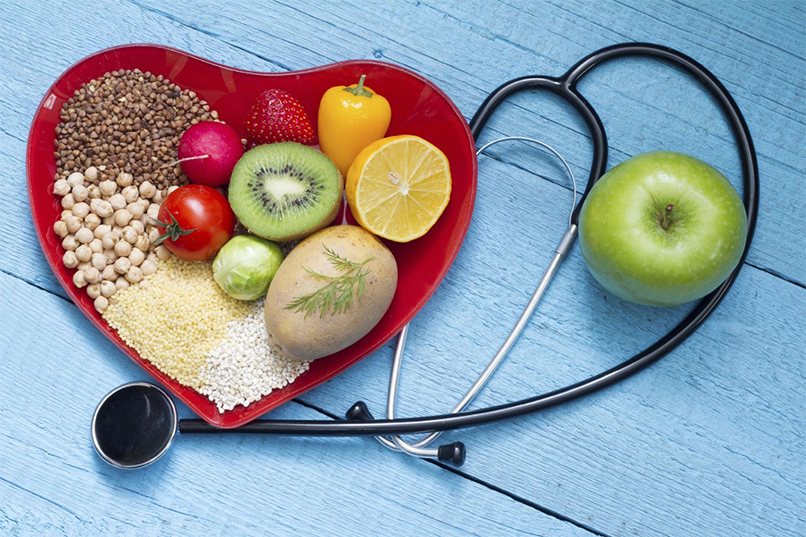High cholesterol is a common problem faced by many people, especially those who are overweight or have a family history of heart disease. Cholesterol is a type of fat found in our blood that is essential for the functioning of our body. However, high levels of cholesterol in the blood can lead to a range of health problems, including heart attacks and strokes. In this article, we will discuss some simple steps that you can take to lower your cholesterol levels and keep your heart healthy.
Step 1: Know your cholesterol levels
The first step to lowering your cholesterol is to know your current cholesterol levels. You can do this by getting a blood test done by your doctor. The blood test will measure your total cholesterol, LDL (bad) cholesterol, and HDL (good) cholesterol levels. Once you know your cholesterol levels, you can take steps to lower them if necessary.

Step 2: Make dietary changes
One of the most effective ways to lower your cholesterol levels is by making dietary changes. Avoid foods that are high in saturated fats, such as red meat, butter, and cheese. Instead, opt for foods that are high in fiber and unsaturated fats, such as fruits, vegetables, whole grains, and nuts. Also, try to limit your intake of processed foods and sugary drinks.
Step 3: Increase physical activity
Another effective way to lower your cholesterol levels is by increasing your physical activity. Exercise helps to boost your HDL (good) cholesterol levels, which can help to lower your overall cholesterol levels. Aim for at least 30 minutes of moderate-intensity exercise, such as brisk walking, cycling, or swimming, on most days of the week.
Step 4: Quit smoking
Smoking is not only bad for your lungs, but it can also contribute to high cholesterol levels. Quitting smoking can help to lower your cholesterol levels and reduce your risk of heart disease.
Step 5: Lose weight
If you are overweight or obese, losing weight can help to lower your cholesterol levels. Losing just 5% to 10% of your body weight can have a significant impact on your cholesterol levels and overall health.
Step 6: Take medication
If lifestyle changes are not enough to lower your cholesterol levels, your doctor may prescribe medication. There are several types of medication available to help lower cholesterol levels, including statins, bile acid sequestrants, and niacin.

Step 7: Monitor your cholesterol levels
Once you have made changes to your diet and lifestyle or started taking medication, it is important to monitor your cholesterol levels regularly. Your doctor will likely recommend that you get your cholesterol levels checked every six months to a year to ensure that your cholesterol levels are under control.
Step 8: Choose lean protein sources
Protein is an important nutrient that is necessary for building and repairing tissues in our body. However, some sources of protein, such as red meat, are also high in saturated fats, which can raise your cholesterol levels. To lower your cholesterol levels, choose lean sources of protein, such as fish, poultry, and legumes.
Step 9: Limit your intake of alcohol
Drinking alcohol in moderation can have some health benefits, such as reducing your risk of heart disease. However, excessive alcohol consumption can raise your cholesterol levels and increase your risk of developing other health problems. To lower your cholesterol levels, limit your intake of alcohol to no more than one drink per day for women and two drinks per day for men.
Step 10: Include plant sterols and stanols in your diet
Plant sterols and stanols are substances that occur naturally in plant foods, such as fruits, vegetables, and whole grains. They work by blocking the absorption of cholesterol in your intestines, which can help to lower your cholesterol levels. You can find plant sterols and stanols in certain fortified foods, such as margarine, orange juice, and yogurt.
Step 11: Reduce your intake of trans fats
Trans fats are a type of fat that are created when liquid oils are turned into solid fats, such as margarine and shortening. Trans fats are especially harmful because they not only raise your LDL (bad) cholesterol levels, but they also lower your HDL (good) cholesterol levels. To lower your cholesterol levels, reduce your intake of trans fats by avoiding processed foods, fried foods, and baked goods that contain hydrogenated oils.

Step 12: Manage stress
Stress can have a negative impact on your health, including your cholesterol levels. When you are stressed, your body releases cortisol, a hormone that can raise your cholesterol levels. To manage stress, try relaxation techniques such as yoga, meditation, or deep breathing exercises.
Step 13: Get enough sleep
Sleep plays an important role in your overall health, including your cholesterol levels. Studies have shown that lack of sleep can raise your LDL (bad) cholesterol levels and lower your HDL (good) cholesterol levels. To improve your sleep, establish a regular sleep schedule and create a relaxing bedtime routine.
Step 14: Work with your healthcare provider
Lowering your cholesterol levels is a long-term process that requires commitment and support. Work with your healthcare provider to develop a plan that is tailored to your individual needs and preferences. Your provider may recommend medication, such as statins, if lifestyle changes are not enough to lower your cholesterol levels.
Step 15: Quit smoking
Smoking can damage your blood vessels and contribute to higher cholesterol levels, among other negative health effects. Quitting smoking can have a significant positive impact on your cholesterol levels and overall health.
In conclusion, high cholesterol levels can increase your risk of developing heart disease and stroke, but there are many steps that you can take to lower your levels and reduce your risk. By making dietary changes, increasing physical activity, quitting smoking, losing weight, taking medication, and managing stress and sleep, you can take control of your health and lower your risk of developing these serious diseases. Talk to your healthcare provider to develop a plan that is right for you.







